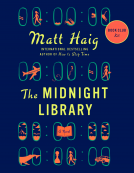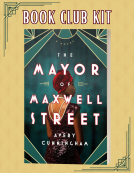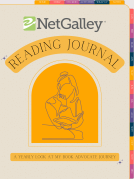
The House on Half Moon Street
by Alex Reeve
This title was previously available on NetGalley and is now archived.
Send NetGalley books directly to your Kindle or Kindle app
1
To read on a Kindle or Kindle app, please add kindle@netgalley.com as an approved email address to receive files in your Amazon account. Click here for step-by-step instructions.
2
Also find your Kindle email address within your Amazon account, and enter it here.
Pub Date Dec 27 2018 | Archive Date Apr 24 2019
Bloomsbury Publishing Plc (UK & ANZ) | Raven Books
Talking about this book? Use #HouseOnHalfMoon #NetGalley. More hashtag tips!
Description
The start of an enticing new historical series set in Victorian London; introducing Leo Stanhope: a transgender coroner's assistant who must uncover a killer without risking his own future
Leo Stanhope. Avid chess player; assistant to a London coroner; in love with Maria; and hiding a very big secret.
For Leo was born Charlotte, the daughter of a respectable reverend. But knowing he was meant to be a man – despite the evidence of his body – and unable to cope with living a lie any longer, he fled his family home at just fifteen and has been living as Leo: his secret known to only a few trusted people. But then Maria is found dead and Leo is accused of her murder. Desperate to find her killer and under suspicion from all those around him, he stands to lose not just the woman he loves, but his freedom and, ultimately, his life.
A wonderfully atmospheric debut, rich in character and setting, in The House on Half Moon Street Alex Reeve has created a world that crime readers will want to return to again and again.
Advance Praise
‘It's hard to believe that this is a debut. Alex Reeve writes with confidence, insight and poise, and I was gripped from first page to last. Leo Stanhope got under my skin and has stayed there. He is authentic, engaging and utterly believable, and I felt for him at every step as he walked the streets of Victorian London. I adored this book, for its intricacy, its vividness and its compassionate heart. Please, more!’
Stephanie Butland, author of Lost for Words
‘A wonderfully fast moving drama with a wealth of captivating characters…And yet, below the decadent charm historical issues of women’s rights are threaded so well into the plot - as is the writer’s sense of tenderness when describing the desperate loneliness of feeling ‘other’ in one’s physical body’
Essie Fox, author of The Last Days of Leda Grey
Available Editions
| EDITION | Paperback |
| ISBN | 9781408892718 |
| PRICE | £8.99 (GBP) |
Average rating from 65 members
Readers who liked this book also liked:
Silvia Moreno-Garcia
Historical Fiction, Literary Fiction, Sci Fi & Fantasy
We Are Bookish
Historical Fiction, Literary Fiction, Multicultural Interest


















